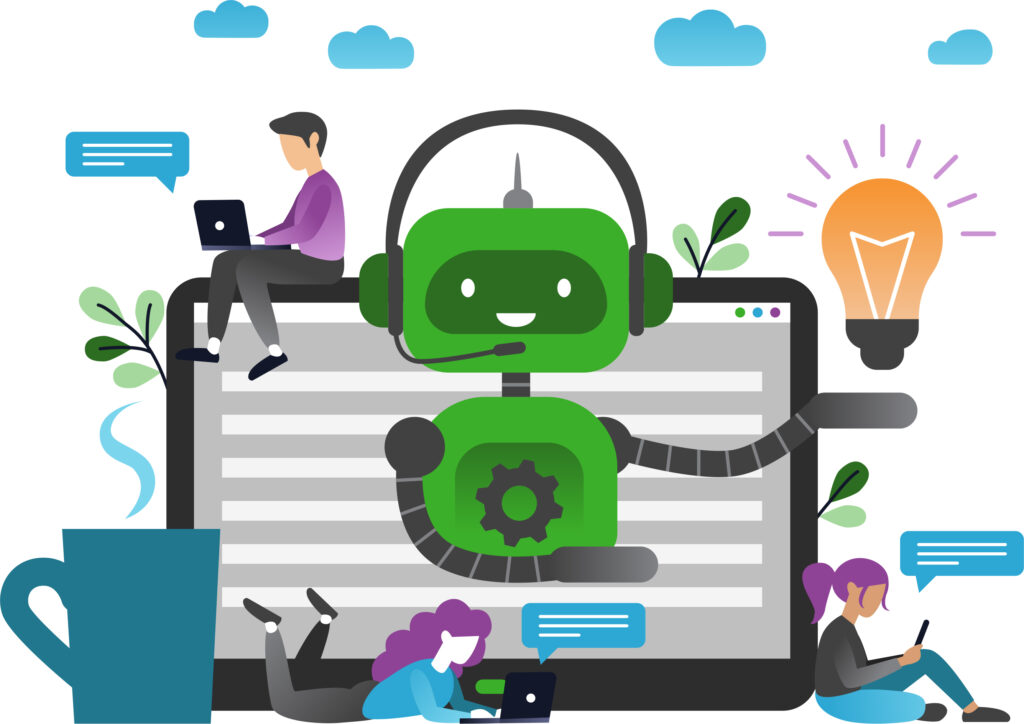*Editorial note: In some instances, ChatGPT provided a few elements and details that have been modified and used in this post.
ChatGPT has mesmerized the internet with examples and stories of artificially created yet still human-like answers, social posts, articles, and books. This new interactive chatbot technology could transform the ways in which we use the internet, interact personally, and connect professionally.
To better understand the hype, we decided to take a drive down this natural language lane to see just how far we might go and where we might end up on our journey toward a world filled with automated digital dialog.
Start your AI engines
Founded in December 2015 by Elon Musk, Sam Altman, Greg Brockman, Ilya Sutskever, Wojciech Zaremba, and John Schulman, OpenAI began with a pledge of USD 1 billion to become a private artificial intelligence research laboratory consisting of two parts:
- the for-profit OpenAI LP
- the non-profit OpenAI Inc. (its parent company)
While much fun can be had using OpenAI to create machine-generated images, such as this oil painting of a sunset with a donkey smiling up close, the real sizzle from the firm is their development of ChatGPT (short for “Chat Generative Pre-training Transformer”).
ChatGPT is a language model that generates human-like responses to user inputs. It first arrived on the scene in 2019 with an open Beta program launched in November 2022. It allows users to enter text inputs to elicit a natural language response to their inquiry within seconds. Users can engage 1:1 in conversational dialog with the chatbot while, in return, helping the AI improve.
In just five days, it had one million users sign up for the service.
According to our ChatGPT query, the project’s focus is to develop and promote friendly AI to benefit humanity as a whole. ChatGPT notes that the founders believed that, by making AI research transparent and open, they could help ensure that the benefits of AI are widely distributed and that the technology is used for the good of all.
ChatGPT also provided a list of goals for the program, summarized as follows:
- Generating human-like text that is indistinguishable from text written by humans
- Improving contextual conversational AI dialog with natural responses
- Emulating human-like reasoning and decision-making
- Providing easy access for developers to fine-tune the model for specific tasks or industries
ChatGPT’s ability to recognize when it makes a mistake has made many take notice of the power this technology has and can bring to society.
Understand the practicalities
Natural language models are a single tool in the toolbox of content creation and human-to-machine conversations. The outputs can be used to fuel other data and information activities. To understand where natural language excels and struggles, we queried ChatGPT to gain insights to include in this post. The responses provided have been modified for brevity.
Where natural language excels at delivering results:
- Text generation: ChatGPT and other natural language models excel at generating text that is indistinguishable from text written by humans. This is particularly useful for tasks such as content creation, where it can be used to write articles, stories, or even entire books.
- Language understanding: ChatGPT and other natural language models can understand natural language nuances and subtleties, enabling them to perform tasks such as language translation and text summarization with high accuracy.
- Conversational AI: ChatGPT excels in conversational AI, as it is specifically designed for this purpose. It can generate contextually appropriate and natural responses in a dialogue setting, which makes it suitable for applications such as chatbots, virtual assistants, and customer service.
Areas where ChatGPT and other natural language models have trouble demonstrating success or value:
- Common sense reasoning: They struggle to understand the context of the situation and generate a response that makes sense in that context.
- Handling rare or out-of-vocabulary words: They struggle to handle encounters with rare or out-of-vocabulary words where limited data or context results in incorrect or nonsensical responses.
- Complex reasoning and problem-solving: They struggle with logical deduction or mathematical calculation, limiting them to text-based generation using the data they were trained on, where they may not be able to develop a new solution to an unseen problem.
The core requirement of having access to vast amounts of variable data types while making real-time contextual connections between different pieces of information gleaned from the data analysis performed keeps these challenges in play.
A sampling of potential
ChatGPT is a powerful tool for content creation and conversation, with endless possibilities and potential. These are a few examples we’ve uncovered:
- Compiling research
- Crafting an essay for college
- Creating Excel formulas
- Converting disjointed thoughts into well-formed messages
- Generating search engine-friendly content
- Providing customer service
- Providing customized instructions
- Scripting and producing videos
- Streamlining processes using automation
- Translating content from one language to another
- Writing computer code
Not everyone is thrilled with the potential to hide behind the content that ChatGPT creates. To help universities and colleges keep their students honest, one senior at Princeton University built an app that can determine whether or not AI wrote an essay on behalf of an actual human.
With mind-blowing investments and sensational stories making the news, we must prepare ourselves for what could be a wild ride.
